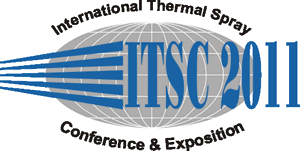| Abstract: |
The Shock-wave Induced Spray Process (SISP) is a method of applying coatings of various metallic-based materials onto a wide range of different substrates. It utilizes the kinetic and thermal energy induced by a moving shock-wave to accelerate and heat powder particles. This process is a new Cold Gas-Dynamic Spraying (CGDS or simply Cold Spray) material deposition technique which can be categorized as a thermal spray process. The process utilizes a sequence of moving shock-waves created by the fast opening and closing of a valve; up to 30 pulses per second is presently conceivable. When the valve is rapidly opened and closed shortly thereafter, a shock-wave is generated that propagates into the spraying gun, accelerating and heating the powder present in the gun. Similar to the cold spray process, the particles then impact the substrate and deform plastically to produce a coating. This process, however, differs from the CGDS in that it is possible to achieve a higher particle impact temperature.
A transient axisymmetric model for the process is developed using Fluent. The model is validated with reference to a simplified one-dimensional approximation of the flow field. The model includes the continuity, momentum energy equations as well as the ideal-gas equation of state and turbulence modelling equations. The valve is represented as a ball-seat type. Values of pressure, axial velocity, Mach number, as well as static and total temperature are carefully examined. It is found that a zone develops in the flow that experiences elevated levels of temperature and velocity simultaneously. This is the main distinction between SISP and traditional CGDS processes. The effects of varying supply pressure and temperature on these flow variables are investigated in detail. Additionally, the effect of changing the driving gas type is investigated using air and helium as examples.
|
|
